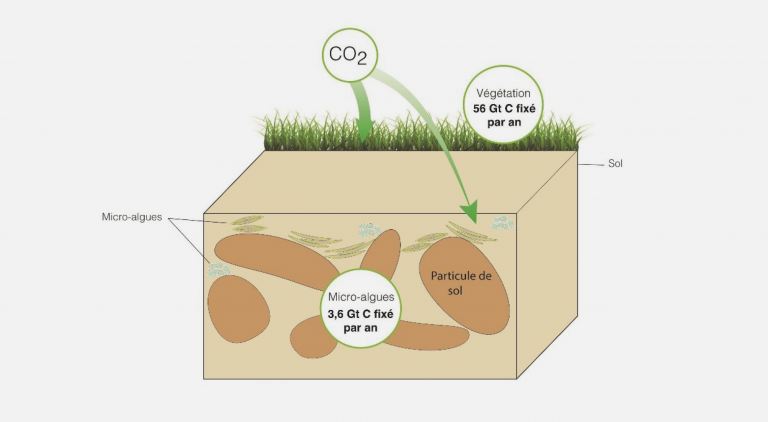
The word algae evokes the sea, yet there are also terrestrial algae and they can be found in deserts, peat bogs and on the top of mountains… Vincent Jassey from the Laboratoire écologie fonctionnelle et environnement (CNRS, Toulouse INP, UT3 Paul Sabatier) and his team have used machine learning modeling to demonstrate the importance of the role of terrestrial algae in the carbon cycle, they have published their study entitled “Contribution of soil algae to the global carbon cycle” in the journal “New Phytologist.
Terrestrial algae are single-celled organisms that, like plants, capture atmosphericCO2 and thus contribute to carbon storage in soils.
Vincent Jassey, the study’s lead author, explains:
“I work on peatlands, and I realized that these algae were present in large quantities. I wanted to know what their contribution to the carbon cycle could be. Because, until then, in the plant kingdom, only plants were taken into consideration in terms of assimilation of carbon dioxide (CO2). But we have shown that terrestrial algae also contribute significantly.
Five million algae per gram of soil
Vincent Jassey and his team first sought to determine the distribution of terrestrial algae through publications on the subject and it appeared that, while they are found in all regions of the globe, their quantity varies according to the ecosystem where they are found: from a few thousand to several million per gram, with an average of 5 million. The surprise for the researchers was that they are more abundant in acidic, moist, vegetated soils than in desert regions.
Predicting carbon productivity through modeling
The researchers enriched the environmental data of the algae with satellite data, temperature, vegetation, soil moisture, CO2 content … and tested several algorithms to model the prediction of carbon productivity of algae, the random forest proved to be more effective both in terms of predictions and error margins.
They found that these algae capture about 3.6 gigatons of carbon per year, or 30% of humanCO2 emissions. These results contradict certain preconceived ideas about the role of microorganisms in soils and demonstrate that, while microbial photosynthesis is a major component of aquatic ecosystems, it is also a major component of most terrestrial ecosystems.
While there is a need for improved models, the study nevertheless revealed that these microalgae are crucial organisms for the global carbon cycle.
The researchers state:
“These results change basic assumptions about the role of microbes in soil, showing that microbial photosynthesis is a major component not only of aquatic but also of most terrestrial ecosystems, and highlight the key role of microalgae in the global carbon cycle. Protecting soil biodiversity has never been more important than it is today, at a time when it is increasingly urgent to use every opportunity to reduce the level of CO2 in the atmosphere.”
Article source: contribution of soil algae to the global carbon cycle
Vincent E. J. Jassey, Romain Walcker, Paul Kardol, Stefan Geisen, Thierry Heger, Mariusz Lamentowicz, Samuel Hamard, Enrique Lara
https://nph.onlinelibrary.wiley.com/doi/10.1111/nph.17950
Translated from De l’importance du rôle des algues terrestres dans le cycle du carbone









